Scientific and Technical Support to Aquatic Programs
AAMT provides scientific and technical support to various aquatic programs. Some examples of the science and technical support given are included below.
Aquatic Reserves
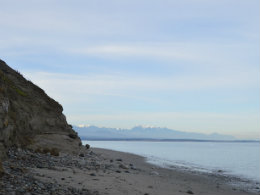 The Department of Natural Resources has established aquatic reserves throughout the state to protect important native ecosystems. Through the aquatic reserves, DNR promotes the preservation, restoration, and enhancement of state-owned aquatic lands that are of special educational, scientific, or environmental interest. AAMT has supported the objectives of the aquatic reserve program in the following ways:
The Department of Natural Resources has established aquatic reserves throughout the state to protect important native ecosystems. Through the aquatic reserves, DNR promotes the preservation, restoration, and enhancement of state-owned aquatic lands that are of special educational, scientific, or environmental interest. AAMT has supported the objectives of the aquatic reserve program in the following ways:Submerged Aquatic Vegetation Surveys (SAV)
AAMT leads SAV surveys within and in the vicinity of the aquatic reserves. AAMT uses a combination of a sonar, underwater video camera and shoreline stem counts for these surveys. For information regarding the research tools AAMT uses to provide support please see the information provided here. SAV surveys to support the aquatic reserve program are conducted for multiple reasons and have included the following:
-
presence and absence of SAV (such as to gain a baseline)
-
pre-project planning (such as for a proposed restoration project)
-
post project evaluation (to determine impacts to SAV)
-
change of SAV over time (for existing conditions such as outfall effluent, storm events, and shoreline erosion)
Geological Assessments
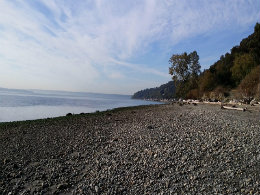 AAMT has completed a geological assessment at the Maury Island Aquatic Reserve. This assessment was completed for a better understanding of feeder bluff and drift cell dynamics within a portion of the reserve. The methods used for this research can be applied to other aquatic reserves.
AAMT has completed a geological assessment at the Maury Island Aquatic Reserve. This assessment was completed for a better understanding of feeder bluff and drift cell dynamics within a portion of the reserve. The methods used for this research can be applied to other aquatic reserves. Identification of Areas of Importance
The Aquatic Reserve Program has defined several reserves in marine areas within Puget Sound and the Straits of Juan de Fuca. More recently it has expanded to freshwater areas and Lake Kapowsin has been identified as the first freshwater reserve. AAMT offered support to the reserve program by completing a comprehensive evaluation of freshwater waterbodies, lakes and rivers, throughout the state of Washington. The evaluation identified natural resources important to the state and applied a thorough investigation into what freshwater systems have concentrations of those resources. This document is used as a reference by Aquatic Reserve Program staff to assist in freshwater reserve management.
For more information about the Aquatic Reserve Program, please visit this link.
Restoration
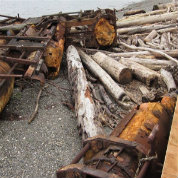

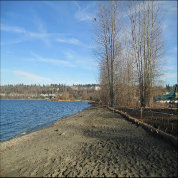
DNR’s Aquatic Restoration Program has completed restoration projects across the state, removing toxic debris, re-vegetating riparian zones and restoring natural functions to estuaries and nearshore environments that are crucial for many wildlife species. The restoration program partners with AAMT on a project by project basis to achieve various restoration objectives. The following are some ways AAMT has provided scientific and technical support:
-
Pre and Post Aquatic Vegetation Surveys (eelgrass, kelp, freshwater, wetland)
For more information about the Aquatic Restoration Program, please visit this link.
Outfalls
Outfall effluent is discharged into Washington state waters on a daily basis through hundreds of permitted outfalls. State and federal regulations are applied to outfalls and the discharge of effluent into a water body, however these processes are not inclusive of all impacts outfalls and effluent may have on aquatic resources. To identify the impacts these structures and inputs may have on state owned aquatic lands, AAMT scientists and the DNR Outfall Program have partnered on the following research and monitoring projects.
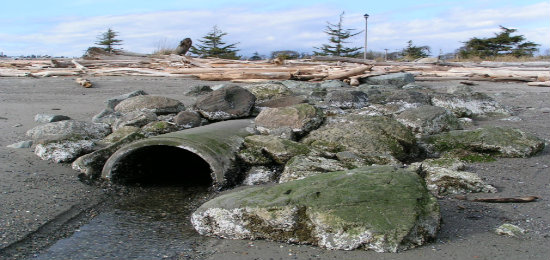
Chemicals of Emerging Concern - POCIS Sampling
Chemicals of Emerging Concern (CECs) is a term used to describe chemicals found in the environment that are not regulated by state or federal agencies. They are chemicals typically not included in the outfall permitting process and as science information becomes available, there is concern for the impacts they may have on natural resources in the state of Washington. AAMT is exploring if CECs are a concern to DNR managed aquatic resources. Click here for more information.
For more information regarding this research, visit our publications website.
NPDES Sediment Sampling
The DNR Outfall Program is an active participant of the Stormwater Work Group (SWG). The SWG was convened by the Puget Sound Partnership (PSP) and the Washington State Department of Ecology (Ecology) in October 2008 to develop a regional 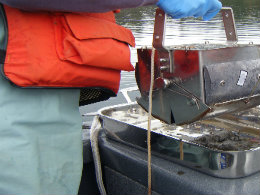 stormwater monitoring strategy and to recommend monitoring requirements in the National Pollutant Discharge Elimination System (NPDES) stormwater permits issued by Ecology. This strategy included recommendations for status and trends monitoring in the Puget Sound Nearshore. The DNR Outfall Program and AAMT participated in the status and trends monitoring in summer 2016. Click here for more information.
stormwater monitoring strategy and to recommend monitoring requirements in the National Pollutant Discharge Elimination System (NPDES) stormwater permits issued by Ecology. This strategy included recommendations for status and trends monitoring in the Puget Sound Nearshore. The DNR Outfall Program and AAMT participated in the status and trends monitoring in summer 2016. Click here for more information.
 stormwater monitoring strategy and to recommend monitoring requirements in the National Pollutant Discharge Elimination System (NPDES) stormwater permits issued by Ecology. This strategy included recommendations for status and trends monitoring in the Puget Sound Nearshore. The DNR Outfall Program and AAMT participated in the status and trends monitoring in summer 2016. Click here for more information.
stormwater monitoring strategy and to recommend monitoring requirements in the National Pollutant Discharge Elimination System (NPDES) stormwater permits issued by Ecology. This strategy included recommendations for status and trends monitoring in the Puget Sound Nearshore. The DNR Outfall Program and AAMT participated in the status and trends monitoring in summer 2016. Click here for more information.For more information regarding this research, visit our publications website.
Circulation Study and Bacterial Sampling
To help identify the impacts outfall effluent may have on state owned aquatic resources, water circulation patterns need to be evaluated. Unfortunately, this information is lacking throughout the state of Washington and determining the pathway effluent will travel and potentially deposit onto substrate is difficult. Obtaining information about water circulation patterns is a fundamental part of understanding outfall effluent impacts. AAMT and the Outfall Program are proposing methods to help evaluate and understand circulation patterns in the nearshore at specific sites. Click here for more information.
For more information regarding this research, visit our publications website.
Invasive Species Control
Invasive species control is an important aspect of natural resource management of state owned aquatic lands. Various methods are used for invasive species control and many questions remain regarding what impacts those methods have, or what the resulting conditions have on other natural resources in the nearshore. AAMT supports invasive species control through the research and monitoring of the following:
Seagrass Mapping and Monitoring
The seagrass Zostera japonica occurs throughout Willapa Bay and Grays Harbor outer coast estuaries of Washington. Some residents report that Z. japonica has expanded its range in recent years, and that this expansion has caused sandy areas to accumulate fine particles, becoming muddy and unsuitable for shellfish aquaculture. At present, there is little scientific data to confirm or contradict these reports. AAMT aims to utilize data from a 2006/07 bay-wide survey of Z. japonica conducted by USDA-ARS researchers (United State Department of Agriculture – Agricultural Research Service) in addition to a survey completed by AAMT in 2013. AAMT will use the data to evaluate changes invasive species control may have on seagrass distribution and sediment in the outer coast.
Click here for more information regarding this research.
For more information about this program, please visit this link.
Shellfish
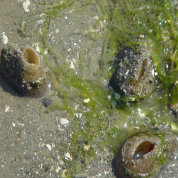
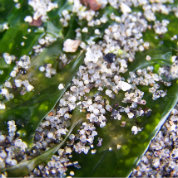
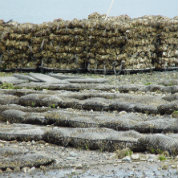
DNR Aquatics offers leases to support aquaculture operations that grow oysters, clams, mussels, and geoduck using a variety of growing methods, including: bottom, bag, intertidal long lines, floating shellfish rafts, and natural recruitment. DNR Aquatics aims to sustainability manage natural resources for the continued use of state owned aquatic lands for aquaculture leasing, while also staying consistent in managing for other natural resources identified as valuable to the state. Research topics AAMT has participated in to have a greater understanding of the impact aquaculture management might have on other natural resources include:
- Monitoring turbidity from geoduck aquaculture dry harvest
- Monitoring turbidity from geoduck aquaculture dive harvest
- Monitoring turbidity from oyster dredging in Willapa
- Geoduck wildstock - bathymetry and herring spawning
For more information regarding this research, visit our publications website.
For more information about various aquaculture programs, please visit this link.
For information regarding the research tools AAMT uses to provide support to shellfish management on state-owned aquatic lands, please see the information here.

